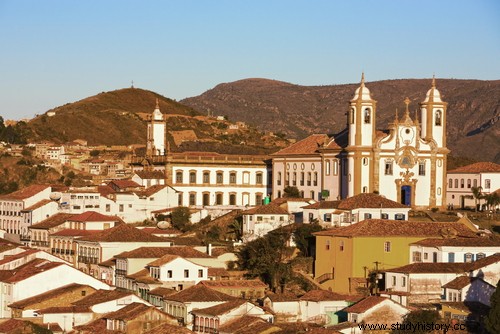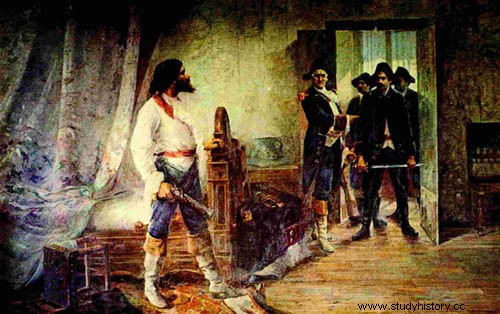
By Me. Cláudio Fernandes
The movement known as Inconfidência Mineira took place in the then Captaincy of Minas Gerais, in the 1780s. The so-called inconfidentes, that is, those who, for the Portuguese crown, had “lacked all fidelity” to the metropolis, were profoundly influenced by Enlightenment ideals of the 18th century, mainly due to the renovations undertaken by the Marquis of Pombal in Portugal and the constant trips that the Brazilian elite made to cities like Coimbra and Paris in the 18th century. In addition, political events of great impact, such as the Independence of the United States, in 1776, contributed enormously to the desire to install a political regime based on enlightened ideals among the Minas Gerais elite, which also wanted to break away from the yoke of the Crown.
While these ideals were bubbling up, there was also, since the 1770s, a progressive decline in Minas Gerais society, caused by the fall in gold production, which generated the inability to fulfill the payment of Crown taxes, which required 100 arrobas of gold annually. In the midst of this situation, some of the members of the local elite began to exert more and more influence in the spheres of power of the captaincy, from the army to the Church. The project of making the captaincy of Minas Gerais a country independent from Portugal, with its own political structure, came from this elite.
Among the conspirators were lawyers, miners, priests, high-ranking military officers, magistrates, and poets. The main names were:Tomás Antônio Gonzaga, Cláudio Manuel da Costa, Joaquim José da Silva Xavier (the Tiradentes), Father Carlos Correia de Toledo, Colonel Francisco Antônio de Oliveira Lopes and Colonel José Silvério dos Reis, who would become the informer. of your companions.
The crisis of the Captaincy worsened when Luís da Cunha Meneses became governor of Minas in 1782. In his government, Cunha Meneses removed the Minas elite from the spheres of power, retaking thus control of the region for the crown of Portugal. However, the situation worsened even more with the successor of Cunha Meneses, the Viscount of Barbacena, who was appointed with the aim of collecting the debts of the Captaincy of Minas Gerais. Barbacena’s measures included, in addition to collecting all the gold produced (which was already scarce in that period), the application of the “Derrama”, that is, a political device that collected the captaincy’s debt in the form of a tax embedded in the population taxes.
These facts accelerated the organization of the inconfidentes revolt. In 1788, Lieutenant Tiradentes and his companions began to prepare a conspiracy against Derrama, which would be implemented the following year. In 1789, however, Barbacena stopped the spill and ordered the arrest of the inconfidentes, starting from the prerogative of the “auto da Devassa” , that is, a law which permitted the governor to judge and condemn those who conspired against the crown. Barbacena was informed of the conspiracy by one of its members, Colonel Silvério dos Reis, who wanted to have his debt forgiven.
The most impressive fact of deterring the Inconfidência was the arrest and subsequent death of Tiradentes. The ensign alone took the blame for the entire conspiracy and was arrested in Rio de Janeiro, then capital, in 1789, but his trial did not take place until 1792. He was sentenced to hang on April 21, 1792 and his body was quartered.

Tiradentes being arrested in Rio de Janeiro *
The death of Tiradentes ended up having a symbolic repercussion later, especially after the Proclamation of the Republic in 1889, which projected the importance of the Inconfidência Mineira as a precursor of liberal and republican ideals in Brazil, elevating Tiradentes to the condition of martyr of freedom, thus beginning the construction of his myth.
*Image credits:Commons
Take the opportunity to check out our video lessons related to the subject:
